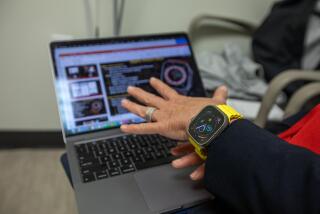Arizonan’s Jarvik-7 Heart Presented to Smithsonian
- Share via
WASHINGTON — The Jarvik-7 artificial heart that saved the life of a Phoenix man two years ago was presented Wednesday to the Smithsonian Institution, and the former patient said he is glad people will be able to see “something that kept me alive.”
The $15,000 plastic-and-metal blood pump replaced the diseased heart of Michael Drummond, who was 25 when he underwent the operation on Aug. 29, 1985, at the University of Arizona Health Sciences Center in Tucson. The artificial heart was replaced nine days later by a natural heart.
‘Happy to Be Here’
“I’m just happy to be here,” Drummond said at a brief ceremony at the National Museum of American History.
The cream-colored artificial heart, mounted on a wood pedestal, was presented by university officials and will join a collection of “spare parts” that have been used as substitutes for organs or limbs.
“It’s possible 100 years from now that the artificial heart will be as routine as a blood transfusion or a hip implant,” said Barbara Melosh, curator in the museum’s division of medical sciences. “It’s also possible that the artificial heart will be viewed as a curious quirk, a byway on the path of medical history that went in another direction.”
As of June 1, 58 people had received a Jarvik-7, which was designed by Dr. Robert Jarvik. Of those, 43 went on to receive a human heart transplant and 27 are still alive.
Drummond, the longest-living recipient of an artificial heart, said he feels fine.
More to Read
Sign up for Essential California
The most important California stories and recommendations in your inbox every morning.
You may occasionally receive promotional content from the Los Angeles Times.













